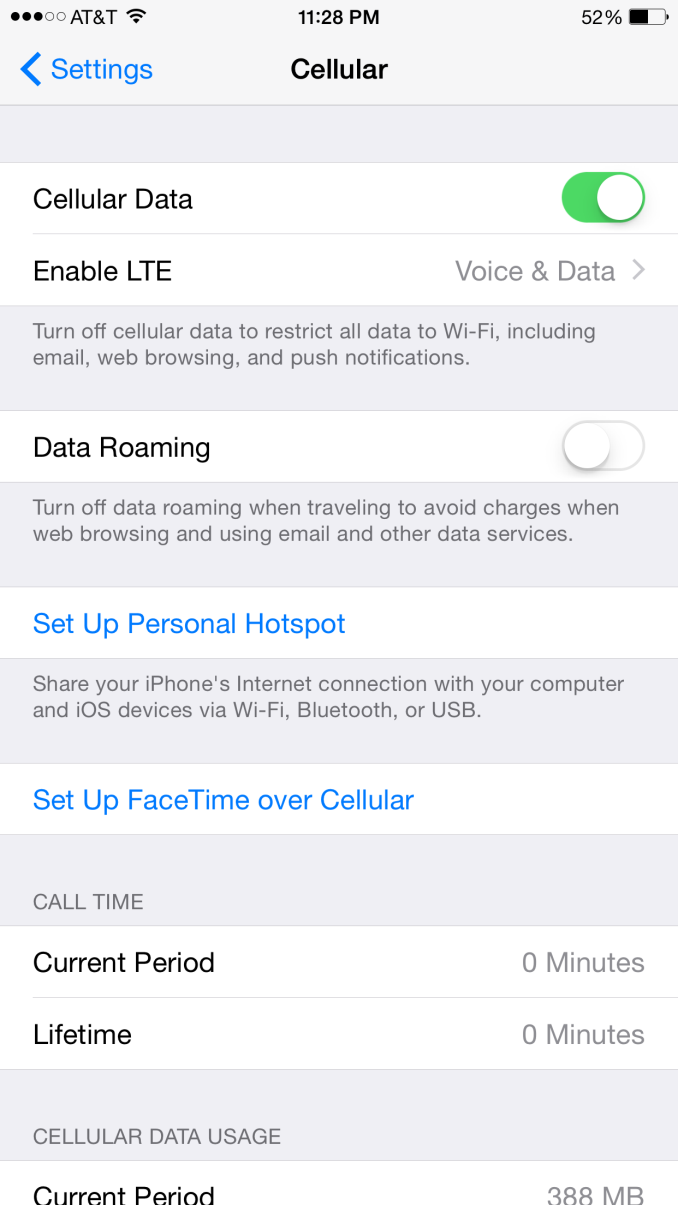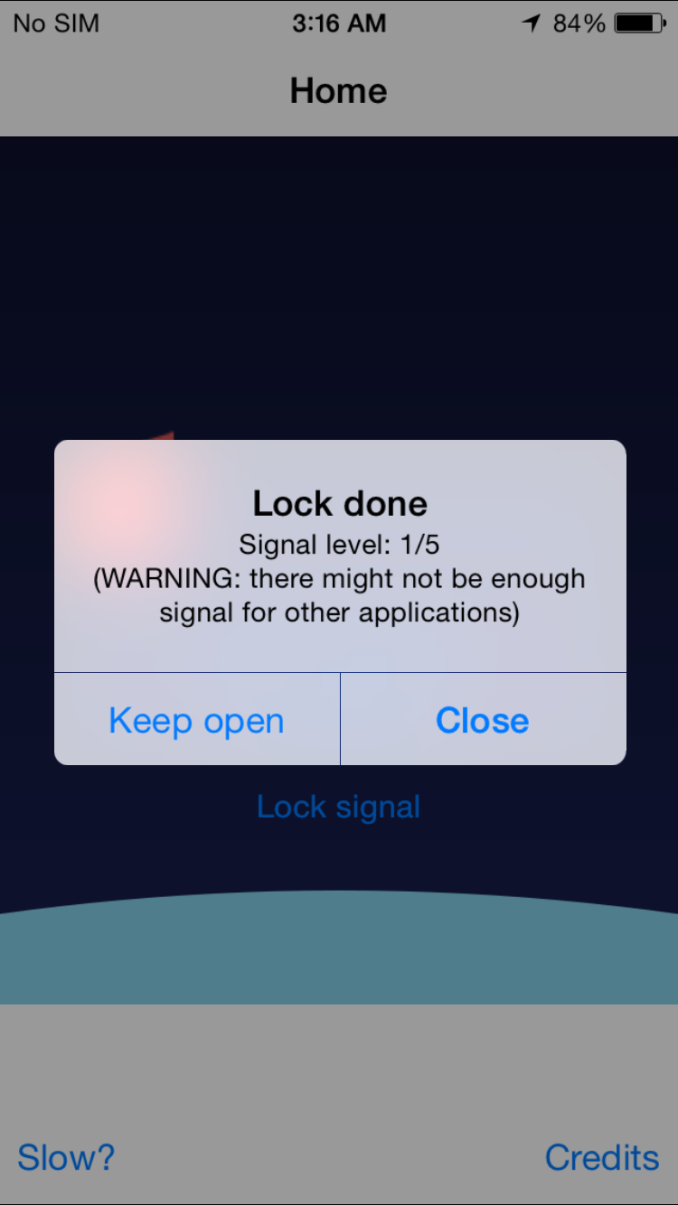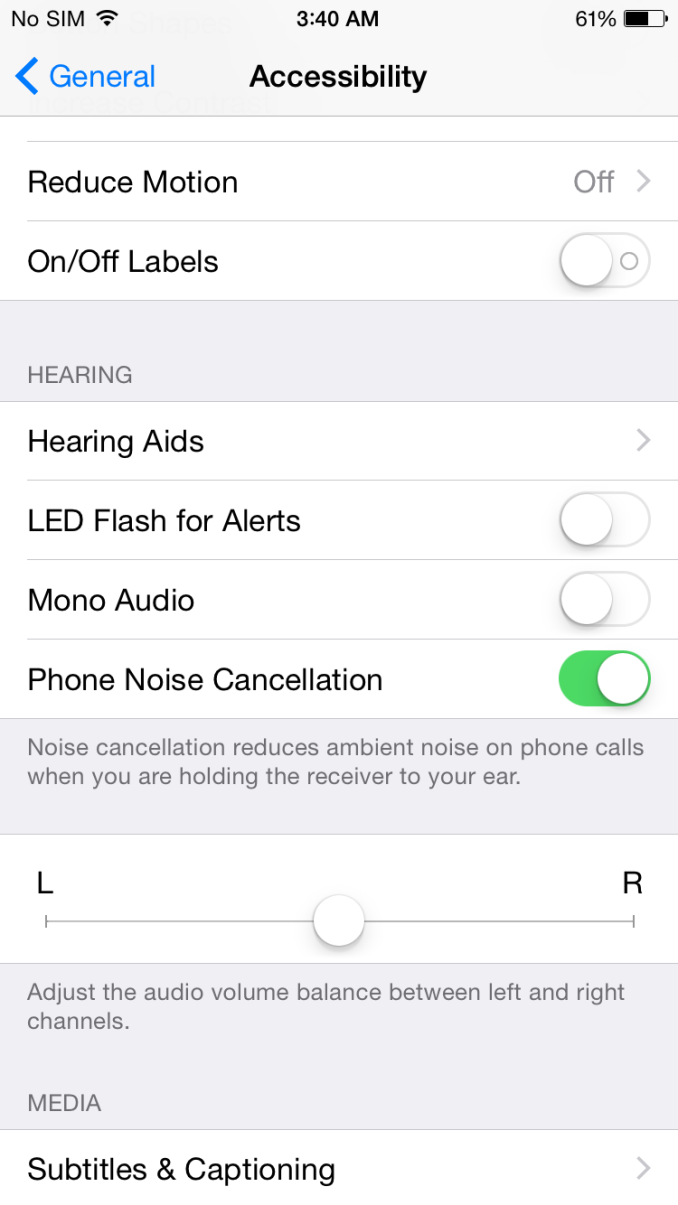The iPhone 6 Review
by Joshua Ho, Brandon Chester, Chris Heinonen & Ryan Smith on September 30, 2014 8:01 AM EST- Posted in
- Smartphones
- Apple
- Mobile
- iPhone 6
Cellular
As was previously announced, the iPhone 6 and 6 Plus both have support for carrier aggregation and VoLTE. For those that are unfamiliar with the two technologies, carrier aggregation is a method of combining multiple pieces of spectrum for simultaneous use, so it would be possible to piece together one band of 10 MHz and another band of 10 MHz spectrum to achieve the same rate that one would get with a single band of 20 MHz LTE. VoLTE is the next generation of voice service that is delivered over LTE, thus eliminating the need for complicated circuit-switched fallback mechanisms to WCDMA or GSM that are currently required. This is all enabled by the move to Qualcomm's MDM9x25 Gobi modem, which is built on 28HPm and therefore brings lower power when compared to the MDM9x15 generation fabricated on 28LP.
GNSS
As the iPhone 6 has Qualcomm's Gobi MDM9x25 modem inside, it goes without saying that it also has IZat Gen 8B. While it isn't possible to force GPS-only location and location is disabled when airplane mode is on, with WiFi turned off and no SIM inserted in the phone a location lock occurs in around 11 seconds.
Misc
While we normally do a WiFi performance test, for some reason it is no longer possible to get a good iperf port for the iPhone 6. It's likely that we're looking at a single spatial stream solution, and given the track record of Broadcom design wins for the WiFi/BT combo chip it's likely that this is a BCM4339 solution. Apple continues to integrate noise cancellation in the earpiece, and at least two microphones are integrated into the phone. Subjectively the single downward-firing speaker reaches acceptable levels of volume although I haven't been able to get the necessary equipment to test peak volume.













531 Comments
View All Comments
rUmX - Tuesday, September 30, 2014 - link
Wait for USB Type-C.mrochester - Wednesday, October 1, 2014 - link
Why are we waiting? We should have had it 2 years ago when Apple released the iPhone 5.grayson_carr - Tuesday, September 30, 2014 - link
Can't agree with you there. My wife has been through countless lightning cables. Apple branded cables either come apart at the seam between the connector and cable or just stop working after 6 months to a year with heavy use, even if there is no visible external damage. Just look at the reviews of Apple's lightning cable on their website and you'll see how terrible they are: http://store.apple.com/us/product/MD818ZM/A/lightn... (80% are 1 star out of 5). Apple covers one replacement, but after that you're on your own. Third party lightning cables, no matter how reputable the brand, always either stop working after a while or the iPhone will suddenly start saying the third party accessory is not compatible.I think the chip Apple requires in lightning cables is the culprit for most of these headaches. I think they die quickly, far before the lifetime of the cable itself, which is why cables will suddenly stop working for no apparent reason or start being labeled as not compatible.
Whatever the cause, I have NEVER had a micro USB die on me. Micro USB cables are also much cheaper than lightning cables. Finally, all of my other electronics use micro USB (Chromecast, Android phones, Kindles, cameras, etc.) which is awesome! I can have a single cable in my car that charges all of my gadgets (except my wife's stupid iPhone of course). For those three reasons, micro USB is far superior to lightning. Being able to insert the stupid cable either way doesn't come close to outweighing the benefits of micro USB I just listed.
mrochester - Tuesday, September 30, 2014 - link
And to respond to that, I've never had any Apple cables, whether it be the old dock connector or lighting cables and ports, break. Contrary to that, my sister's USB port in her Galaxy S3 broke, her Samsung charger ended up with bent pins and my partner's Samsung Galaxy S2 charger ended up fraying at the micro USB end.mrochester - Tuesday, September 30, 2014 - link
Of course, being able to insert the cable in any orientation and it being more reliable makes the benefits of the lighting connector far outweigh micro USB.grayson_carr - Tuesday, September 30, 2014 - link
Well, since reliability could go either way depending on your luck, we have...1) Being able to insert the cable in any orientation
vs.
1) Much lower price
2) A standard that is compatible with many more devices (Cameras, e-readers, Android phones and tablets, Windows phones and tablets, hard drives, portable speakers, etc., etc., etc.)
I would take the bottom two benefits any day over the top single benefit. Imagine if every company was as stubborn as Apple and designed their own cable. I would have to have 20 different types of cables lying around my house and it would be a HUGE pain trying to find the correct cable for the device. Instead, I can have one or two micro USB cables that can work with pretty much anything in my house, excluding iOS devices of course. That principle alone is enough to make me dislike Apple's lightning cable. Standards are a good thing. Proprietary sucks. Thank God other companies haven't followed Apple's footsteps in that regard yet. If they ever do, we're all screwed.
mrochester - Wednesday, October 1, 2014 - link
And I'd take the top one over the two things you listed. Having loads of micro-USB cables that are used by absolutely no devices in my house (my Canon camera is mini USB) isn't a whole lot of use. There's no need to have 20 different cables lying around your house, just 2. Your lightning cables for your iPad and iPhone, and a micro-USB cable for everything else that's stuck in 2012.GerryS - Wednesday, October 1, 2014 - link
I agree. The reversability is nice, but not much of a feature to me. Every other cable I use, except circular power connectors, requires a specific orientation. It never takes more than two tries to find the right one.techconc - Thursday, October 2, 2014 - link
@grayson_carr - Your argument falls apart in multiple places. For starters, you assume reversibility is the only advantage of the lightning cable. It's not. The lightning cable allows for 12W charging while USB is limited to just 9W. Further, you mention the ubiquity of the USB cable as if there is just one type of USB cable. I seem to have a variety of USB types of cables including micro, mini, Type A and Type B (not to mention other proprietary variants) around the house. Please explain to me how this "standard" is working any better for me or the public in general?grayson_carr - Tuesday, September 30, 2014 - link
By the way, if you're in the same boat as me, I have a tip... buy your lightning cables at RadioShack. You can buy insurance on them and it will then only cost $2 to get a replacement when they inevitably stop working.